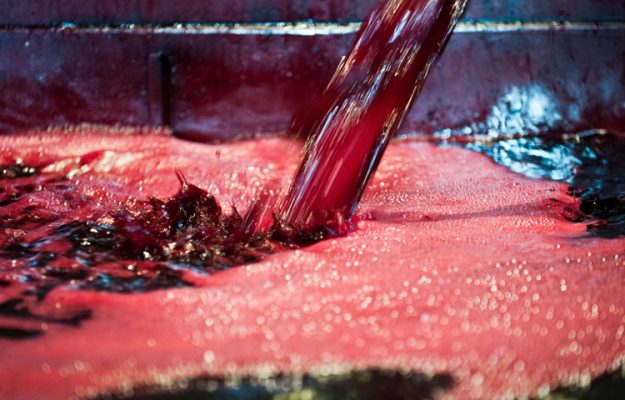The low intensity pulsed electric fields to accelerate the extraction of polyphenols (tannins, anthocyanins, resveratrol and other compounds essential to ensure the aging of wine, ed.) from grapes during the maceration of the must with the pomace: this is the path that are beating the researchers of the Universities of Salerno and Zaragoza, which, as explained by “Agronotizie” (https://agronotizie.imagelinenetwork.com), involves the exposure of the must and the grapes, resulting from the crushing and destemming phase, to an electric field of modest intensity inside a treatment cell consisting of two electrodes separated by an insulating material spacer. The field is applied in the form of pulses: it has short-term peaks applied at regular intervals, and the electric fields generated by the electrodes have the effect of increasing the permeability of the cytoplasmic cell membrane.
Used immediately after the crushing phase, this technique allows a higher extraction of polyphenols compared to simple maceration and, in some cases, also compared to the use of pectolytic enzymes. Tests conducted on the Aglianico variety showed that the use of Pef (Pulsed electric fields), with various electric field intensities, leads to a higher concentration of polyphenols in wine, even if not all varieties respond in the same way to this treatment.
Researchers at the Spanish University of Zaragoza have also shown that in the fermentation phase on fine lees, the use of Pef accelerates the process of yeast autolysis, increasing the release of mannoproteins, organic molecules capable of stabilizing aromatic compounds and wine color. They are also useful to limit protein and tartaric precipitation and to increase the “smoothness” of the product. The technique of pulsed electric fields is also interesting for another reason. By permeating the cell walls (electroporation), Pef also acts on the microorganisms in the wine, devitalizing them. This is, therefore, a way to reduce the microbial count without raising the temperature, which has a negative effect on the organoleptic profile of the product.
Copyright © 2000/2025
Contatti: info@winenews.it
Seguici anche su Twitter: @WineNewsIt
Seguici anche su Facebook: @winenewsit
Questo articolo è tratto dall'archivio di WineNews - Tutti i diritti riservati - Copyright © 2000/2025









































































































































































































